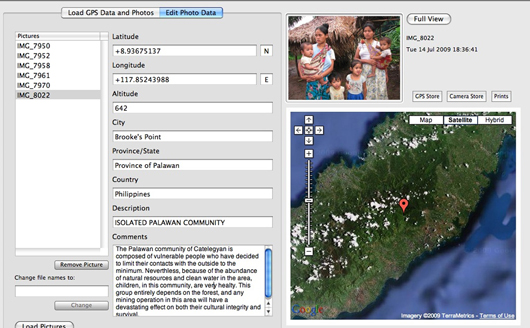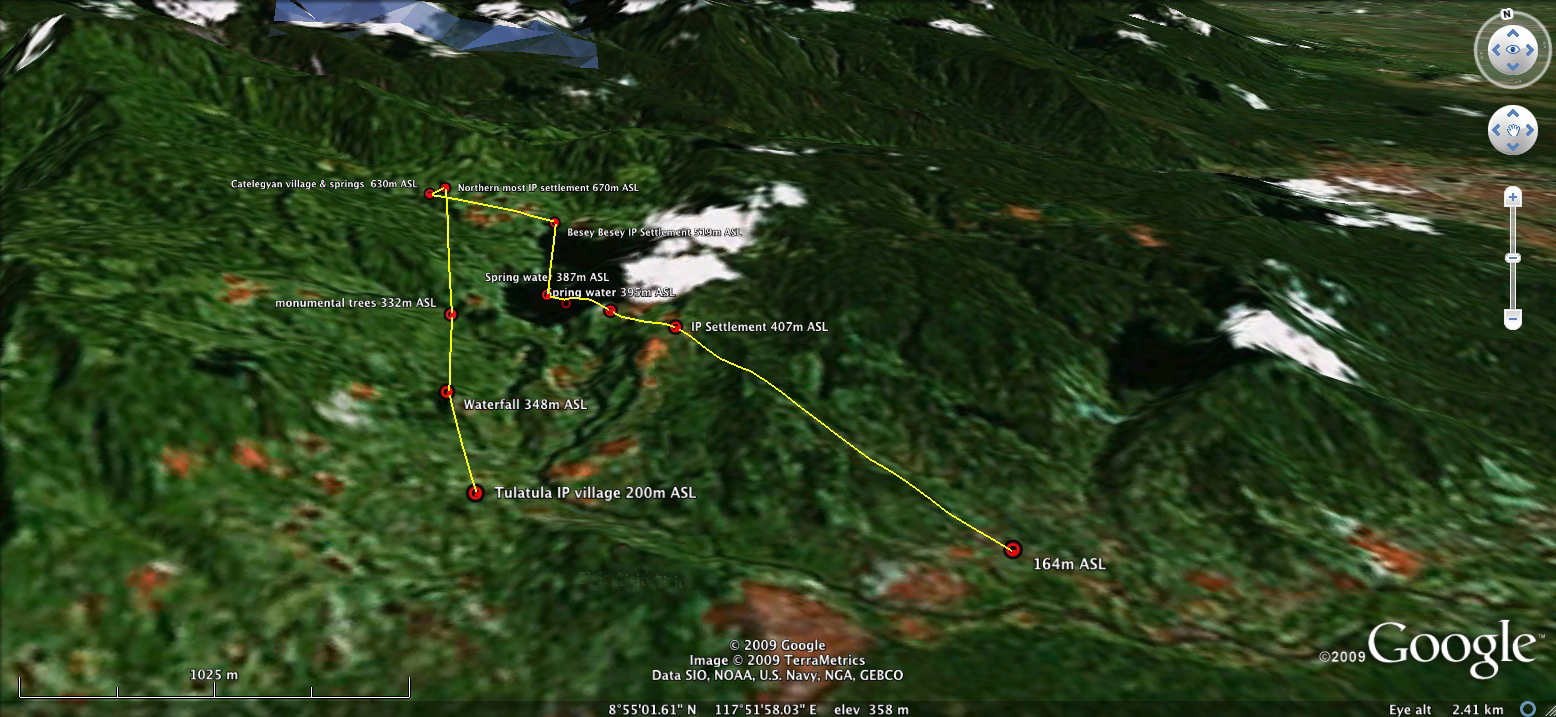Philippines: Geo-tagging reveals mining threats on the “Last frontier”
01.02.10
Plant Talk invited Dario Novellino from the Centre for Biocultural Diversity (CBCD), University of Kent, Canterbury, UK to speak out against the logging and mining in protected areas that is destroying the forests of Palawan.
I will never forget my first sight of Mt. Gantong in 1987. As the sun rose, I reached the top of the second highest peak (1,758m) on Palawan Island, and was treated to a view of the majestic dipterocarp vegetation lying on both sides of the island. This, I thought, is the best conserved Philippine rainforest and for now, at least, paradise on Earth.
Botanically, Palawan, with an estimated 3,000-3,500 flowering plant species is one of the most diverse and rich islands in the Archipelago. For its high biocultural diversity, UNESCO declared the province a “Man and Biosphere Reserve”. Since then, the environmental conditions on the island have deteriorated: landless migrants and illegal loggers have invaded the evergreen lowland forest. However, large tracts of upland forest are still intact. In March 2006, Philippine President Gloria Macapagal-Arroyo called for the revitalization of mining nation-wide. Approved mining claims already cover almost half a million hectares - about 30% of the country’s land area - with more than 2,000 mining permit applications pending. The paradise of Palawan, known as the Philippines’ “last frontier”, has not been spared.
Geo-tagged CBCD/ALDAW mission’s itinerary around the Gantong range.
Click on the image to download the file (jpeg) for a more detailed view of the expedition.
Between July and September 2009, I returned to the Gantong area leading a joint expedition from the Centre for Biocultural Diversity (CBCD) and ALDAW (Ancestral Land/Domain Watch) with the participation of the indigenous Peruvian, Julio Cusurichi Palacios (2007 winner of the prestigious Goldman award). We crossed the eastern side of the mountain range lying in the Municipality of Bataraza. At around 1,000m elevation, as I scanned the canopy trying to pierce its hidden depths, I witnessed an interesting sight. Indigenous people were collecting resin from Agathis philippinensis, a large coniferous evergreen tree that grows to 65m. “These trees are from secondary growth” says Katis a Palawan from the area. “The first growth was already chopped down in the 70s by the INFANTA Corporation. We have waited two decades for the young stands to become productive again. If MacroAsia will cut these trees, it will be the end of our life!”
Indigenous Palawan sell the Agathis resin to local buyers and with the proceeds buy commodities such as salt, sugar, coffee and rice, while waiting for the new harvest. Industrially, the resin is used to manufacture high quality varnish and paints, linoleum, adhesives, and waterproof compositions.
View over the eastern side of the Gantong range.
As we crossed this mountain forest, our GPS device indicated that we were inside the Mineral Production Sharing Agreements (MPSA) area of MacroAsia, a corporation owned by Lucio Tan, Philippines’ richest businessman and one of the richest in Asia. Further down at the fringes of the Gantong another company, Ipilan Nickel Corporation threatens the lower portions of the mountain range, overlapping with the so-called ‘restricted’ and ‘core’ zones. Under the ECAN Guidelines of the Strategic Environmental Plan for Palawan (Republic Act 7611), such areas fall within the protected areas system and, here, extractive activities are not allowed. At an altitude of about 500m we reached indigenous settlements inhabited by very traditional Palawan with limited contact with the outside world. Their sustenance totally depends on the available forest resources. In principle, their rights are protected under the Indigenous Peoples’ Rights ACT (IPRA law) but, surprisingly, mining concessions are still allowed to operate on their ancestral land.

Geo-tagged photos reveals the location of an isolated Palawan Community.
page 1
page 2 >
page 3 >
Related links:
Chile: A Chilean conservation adventure
13.11.09
 Smoking volcanoes, devastated towns, leech infested forests, endless breathtaking landscapes, and the beautiful but often highly endangered plant species of South America greeted the team from Wakehurst Place, Kew’s country estate in West Sussex, the Forestry Commission's Bedgebury Pinetum and Westonbirt Arboretum.
Smoking volcanoes, devastated towns, leech infested forests, endless breathtaking landscapes, and the beautiful but often highly endangered plant species of South America greeted the team from Wakehurst Place, Kew’s country estate in West Sussex, the Forestry Commission's Bedgebury Pinetum and Westonbirt Arboretum.
